How do you cultivate attentiveness? How do you give your attention rightly and well?
Back in the summer of 2021, when I was writing the proposal for my first book, I thought I was giving that work good attention. It seemed like the only thing I could think about. I mentally tested different summary statements while I cooked dinner. I considered different artwork options while grocery shopping. I outlined paragraphs as I fell asleep. When I went on walks through our neighborhood I could not tell you what I saw, only what sentences I was trying to construct.
But all that thinking wasn’t really attention. I was circling, or fretting, or stewing, but the constancy of that internal rumination meant I couldn’t actually offer anything my notice or regard.
I needed a practice of attentiveness.
Earlier that summer I had visited my old graduate school haunt—the St. Louis Art Museum—with my friend Liz. Instead of seeking out the highlight reel of greatest hits, Liz suggested that we look for one color. We chose a particular purple and made our way through the museum circuitously, stopping to snap photos of that hue wherever we found it: in German Expressionist paintings, in a late nineteenth century landscape, and a Dan Flavin light reflected on a black Frank Stella canvas. It was an opportunity to string together a series of tiny delights, to seek out a connective thread as my body moved from space to space.
Could I do the same in my neighborhood?
I started my daily walk, and the darkest purpley-black of a pokeweed berry caught my eye. And so for the rest of the walk I looked for that eggplant hue: in leaves, in the trim of houses, in front porch mums, and in one custom “no parking” sign. The practice kept me present in my body when I wanted to just be in my own head.
So I did it again, this time with chartreuse. And while I began the walk assuming that I’d see that bright, neon hue in construction signs and backyard soccer nets, I found it instead in creeping jenny tendrils and blazing star fronds, in coleus and fallen ash leaves. I learned I was wrong simply by looking.
I started calling the practice #contemplativecolorwalking and shared it on Instagram.
Go on a walk.
Pay attention to a color that catches your eye
Purposefully look for that color while you’re walking
You can document what you see if you want.
The goal, I wrote, is not to “win,” or to find “the most” instances of your color. Nor is it to make the most aesthetically pleasing photographs. The aim is to be aware of what’s around you, to accept limitations and recognize abundance. It is paying attention in a particular way.
A few days after cold emailing a distinguished scholar asking for a favor, I was still beset with anxiety and self-doubt. I left the house and, on a contrarian impulse, decided to look for…cerulean. Finding that color seemed as improbable as an esteemed art historian writing back to me. But, two blocks later there was that bright, summer sky blue in the neighbors’ Adirondack chairs.

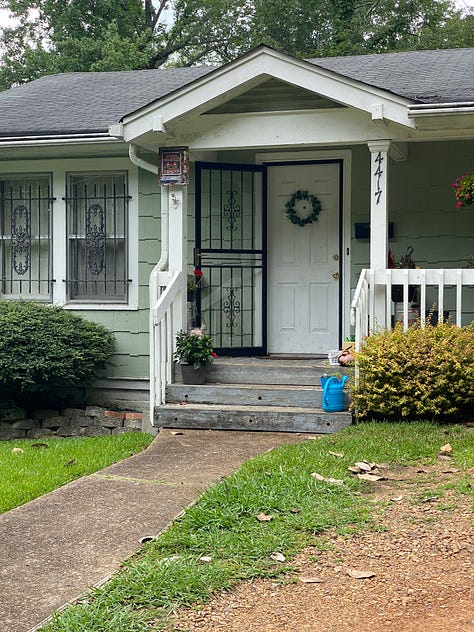
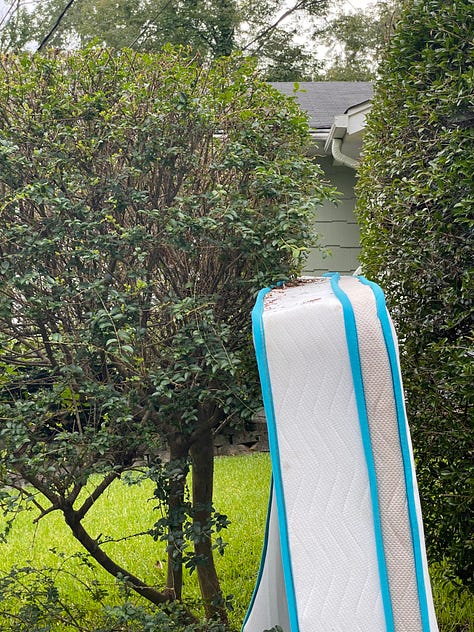

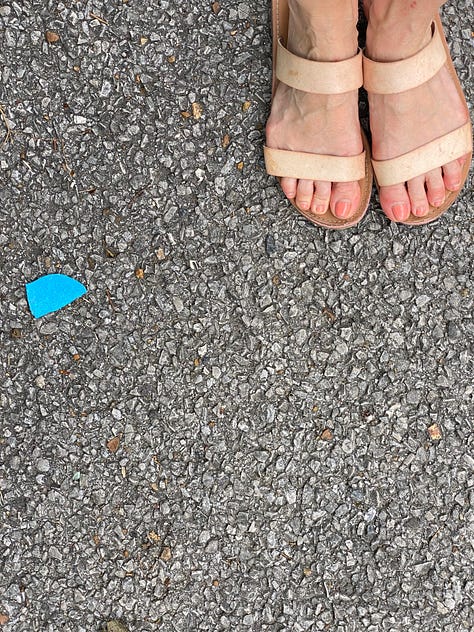
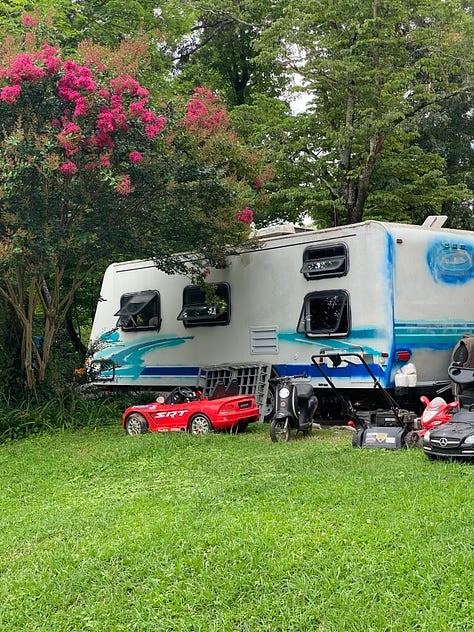
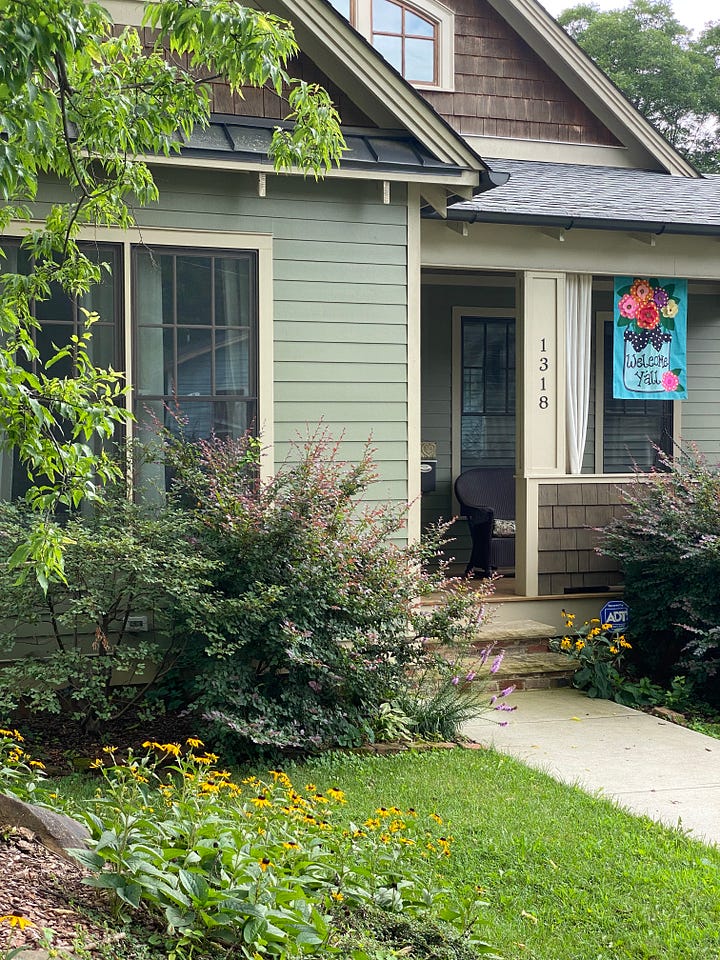

And as a watering can on someone’s front step.
And as the binding on a discarded mattress.
And the color of a partially deflated inflatable pool, squeezed next to a hedge.
And in a random scrap of plastic on the road.
It was the color of a camper van’s logo, a fluttering welcome banner, and, yes, even an entire house.
I was humbled. Cerulean felt like a difficult ask, but there was plenty of the impossible to be found. Maybe, then, there was also more grace than I could imagine.
A day later, the distinguished scholar wrote back with a “Yes.”
Not every color walk has been a great revelation. But when I assumed the whole neighborhood was the same shade of green, the rosy pink of new leaves and fruiting stems pushed to the surface. There was yellow that persisted through wintry gray, the minty green of cacti and oxidized copper, and the particular shimmer of white after the rain. My boys (correctly) located bright orange in a muddy clay hole on the side of the road. Hot pink, I found out, is the color of late summer resilience.
I’ve learned to walk not to escape from stress but to move towards goodness.
In my region of the U.S., changing fall leaves mean that is a great time to go on a color walk. The reds are the first to turn in my area, but I sought out the darkest wine hue, like a beautiful Barolo.
Every year, maple and dogwood trees stun me with their about-face. Sugar trapped in the leaves produce a new pigment, anthocyanin, which we see as red. But that pigment is costly for a tree to make, and scientists have puzzled over why an organism would expend so much effort only to lose the leaves shortly thereafter. One theory is that the production of anthocyanin actually helps protect the plant as it slows down to prepare for cold weather. And I love that this beautiful thing is a result of the tree having limits.
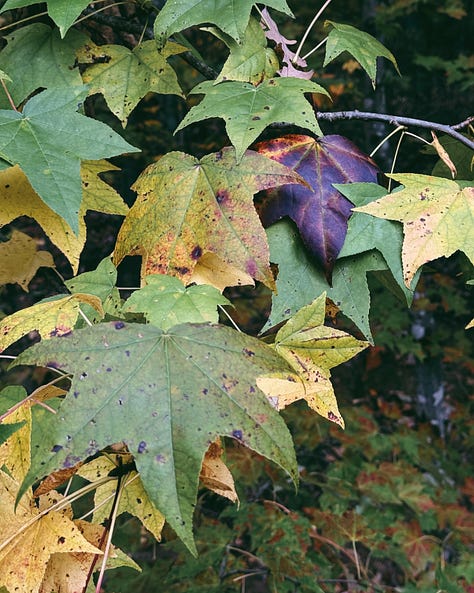

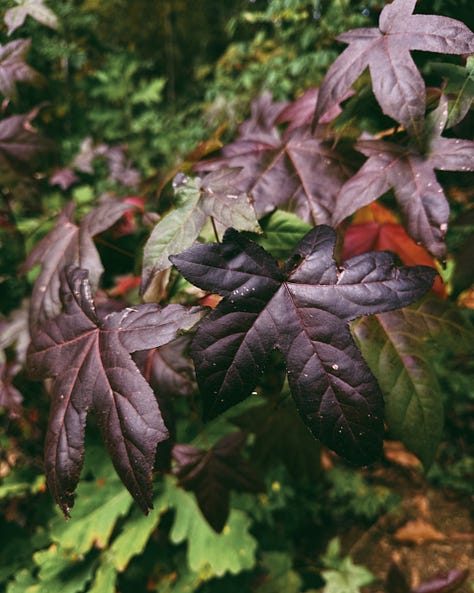
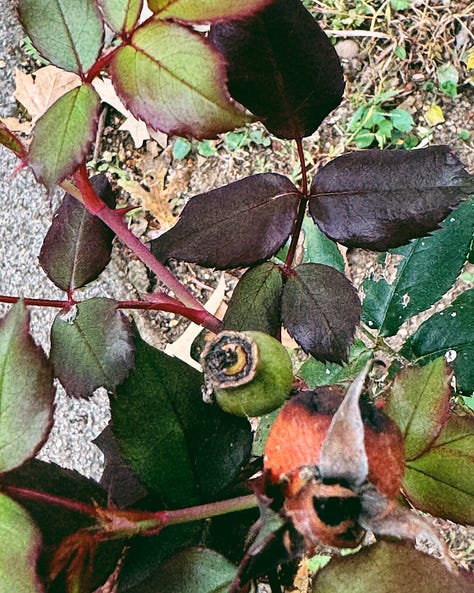

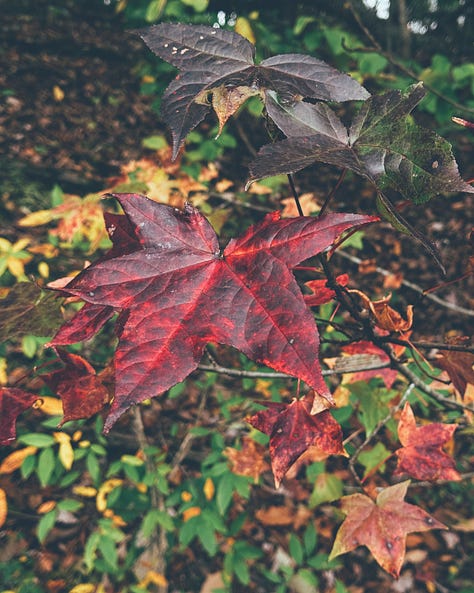

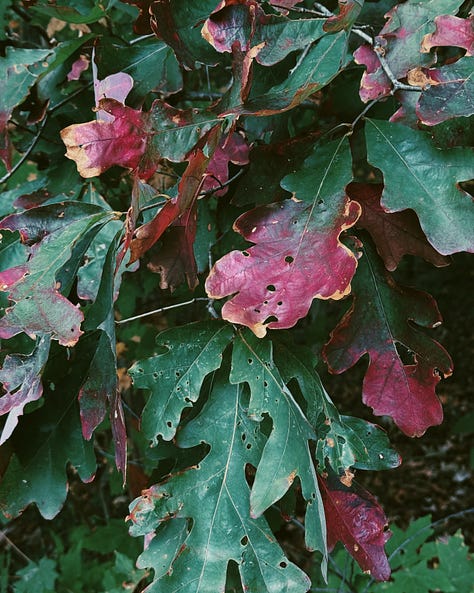

Whether your autumn leaves have already dropped or you live somewhere where everything stays green, I invite you to join me in contemplative color walking in the coming week. I’d love to know what you see.


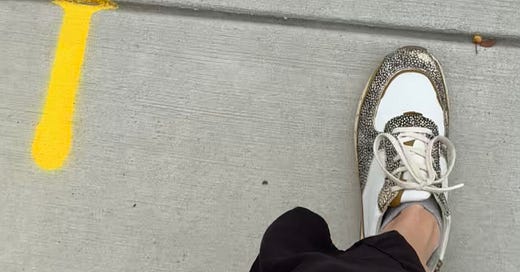








What a delight this was. I will 100% be trying this out—thank you!
lovely